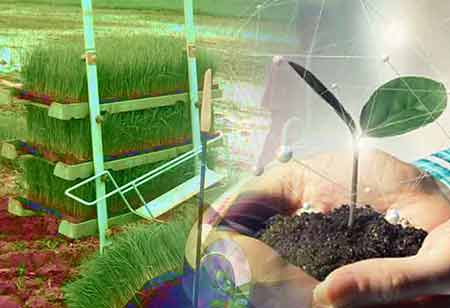Thank you for Subscribing to Agri Business Review Weekly Brief
Different Agricultural Sensors
Many historians argue that the most significant upheaval in human history was the agricultural revolution, which allowed settlers to effectively produce sustainable food.

By
Agri Business Review | Monday, August 29, 2022
Stay ahead of the industry with exclusive feature stories on the top companies, expert insights and the latest news delivered straight to your inbox. Subscribe today.
Technological revolutions make farming operations more profitable than ever, harvesting more crops per area and yielding greater quality products.
Fremont, CA: Many historians argue that the most significant upheaval in human history was the agricultural revolution, which allowed settlers to effectively produce sustainable food.
Still, as the worldwide population has risen, farming operations have grown increasingly complex, vast, and optimized. Technological revolutions make farming operations more profitable than ever, harvesting more crops per area and yielding greater quality products. Sensors are the major player.
Let's explore the five key sensors in smart agriculture technology:
pH Sensors in Agriculture
The accessibility of nutrients is as important to plant growth as it is to animals and living organisms. In improving a plant's growth potential and yielding extremely productive harvests, it's essential to have a deep and quantitative knowledge of the soil conditions from which agricultural products come.
Utilizing pH sensors offers critical feedback about soil nutrient deficiencies or the existence of unwanted chemicals. These sensors support smart agriculture monitoring daily, weekly, monthly and annual variation in soil pH and nutrient levels to educate the agricultural industry.
GPS Sensors
Usually associated with the automotive and cellular communication industries, GPS sensors are also beneficial to smart agriculture. From ancient settlers farming sheep with wooden staffs to the cattle drives of the Old West, keeping track of their flocks has often been of utmost importance to farmers. Modern GPS tracking of livestock has increased the ability to monitor animals with a simple push.
On the mechanical part of agriculture, plant harvesting and relevant farming techniques have recently adopted GPS technology in precise vehicle guidance systems. In many farming applications, like tilling a field, using auto-guided systems can optimize field routing, reduce process overlap and ultimately reduce the time required to complete a task.
Agricultural Temperature Sensors
Temperature Sensors are important in two key categories of smart agriculture — ambient condition monitoring and mechanical asset monitoring. Temperature sensors not only play a major role in monitoring the ambient conditions of physical space, but they play an important role in nearly all smart agriculture asset monitoring applications.
Ice wine harvesting, for example, occurs within the narrow temperature window when environmental temperatures first arrive between -10°C and -12°C during a harvesting season. Greatly accurate temperature and humidity sensors and precise predictive temperature forecasts are imperative to the ice wine industry.
Asset Monitoring
Asset monitoring is also an application in smart agriculture in which temperature sensing plays a crucial role. In addition to monitoring the harvested plants, temperature sensors observe the equipment that gathers these plants.
Temperature sensors send alerts whenever an equipment system requires minor maintenance, is underperforming, or is critically failing. They're employed in every predictive and reactive maintenance system to protect against overheating and detrimental failure.
Accelerometer Sensor
Although not generally associated with farming and other agriculture, accelerometers are valuable in maintaining vital smart agriculture equipment. Primarily employed on moving components and motors, accelerometers discern slight variations in movement and vibration inconsistencies and forecast when standard maintenance is needed, or a compromised component needs replacement.
Like temperature sensors in predictive maintenance, accelerometers are widely utilized across the smart agriculture industry to predict and assist with required maintenance.
Accelerometers are also utilized in a variety of automated systems and tracking methods. For instance, a low-power accelerometer makes it easy to monitor the status of an adaptable spray nozzle at the end of a fertilization beam.
With newer technology, autonomous drone use in smart agriculture depends heavily on accelerometers and IMU (inertial measurement units), Track motion, crash events, speed, and even position in space.
Smart Cameras use in Agriculture.
While smart camera technology is away from a stereotypical analog sensor, it has been increasingly adopted for various smart agriculture applications. Some Companies have implemented smart camera technology to discover weeds and other plant locations to automatically and accurately dispense herbicides and fertilizer. This improves chemical utilization and increases overall productivity while decreasing chemical usage.
Also, pest control has consistently been one of the most significant challenges in agriculture. Farmers now employ smart cameras for real-time pest detection and monitoring to effectively seek action against pests without harming agriculturally beneficial non-target insects. Smart cameras can also substitute semi-legacy sensing devices such as ambient light monitoring, enabling system simplification and reducing the component count.
Future of Agriculture Sensor Technology
The smart agriculture industry is constantly growing and expanding, with new solutions coming to the market almost every day. Devices that aggregate sensor data, relay crucial information to farmers and ranchers, and help optimize vast agricultural processes continually increase in capability and importance.





